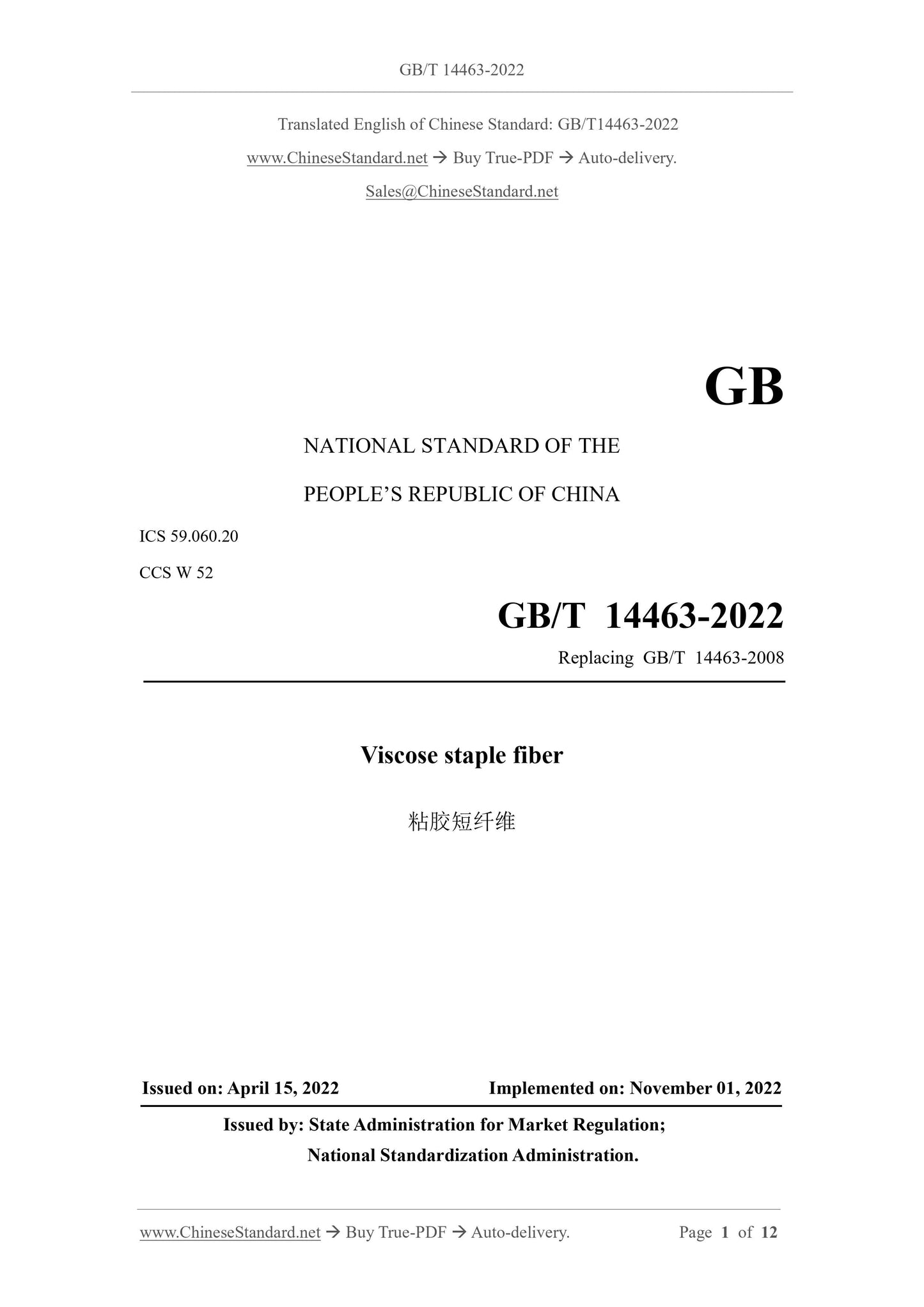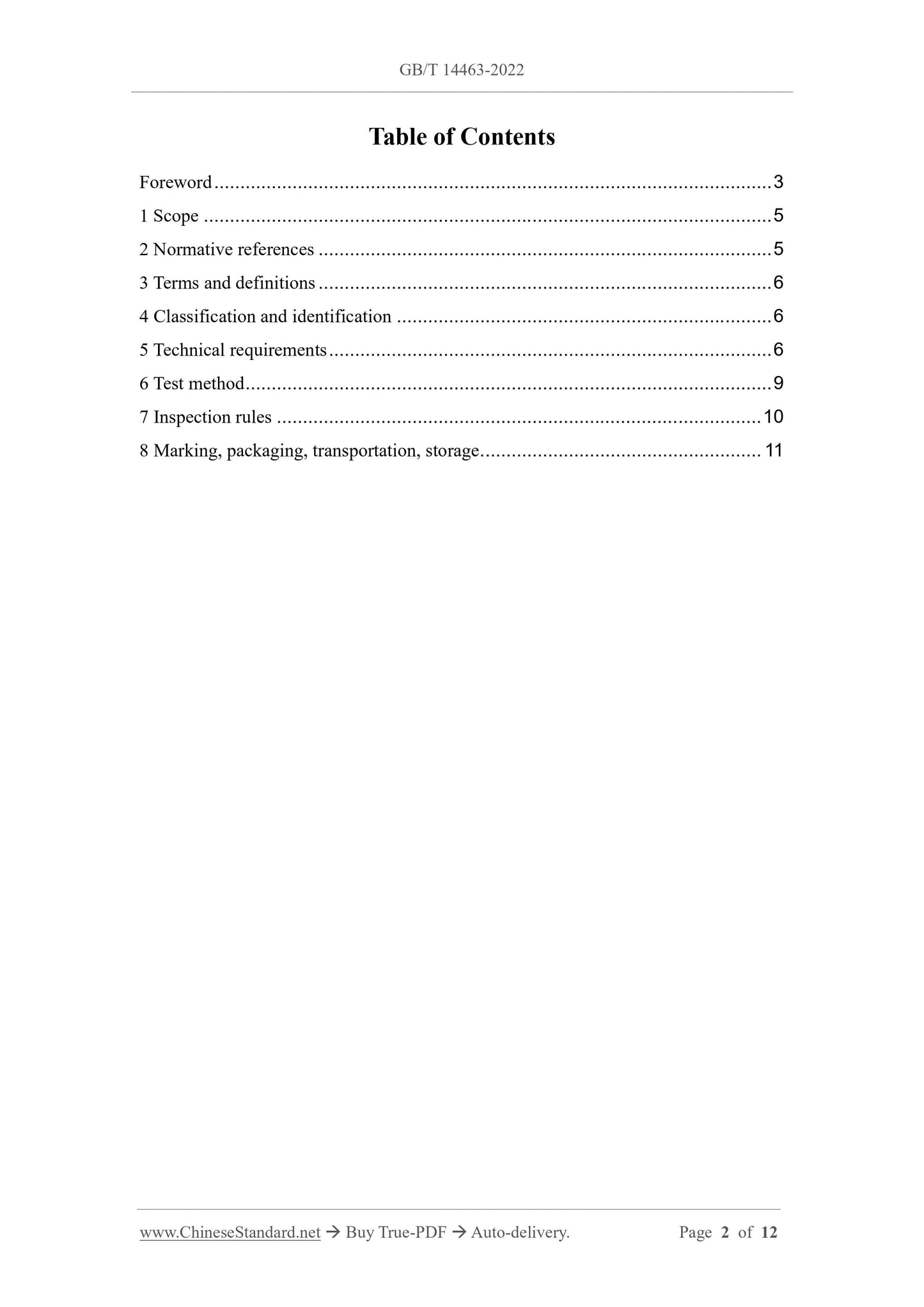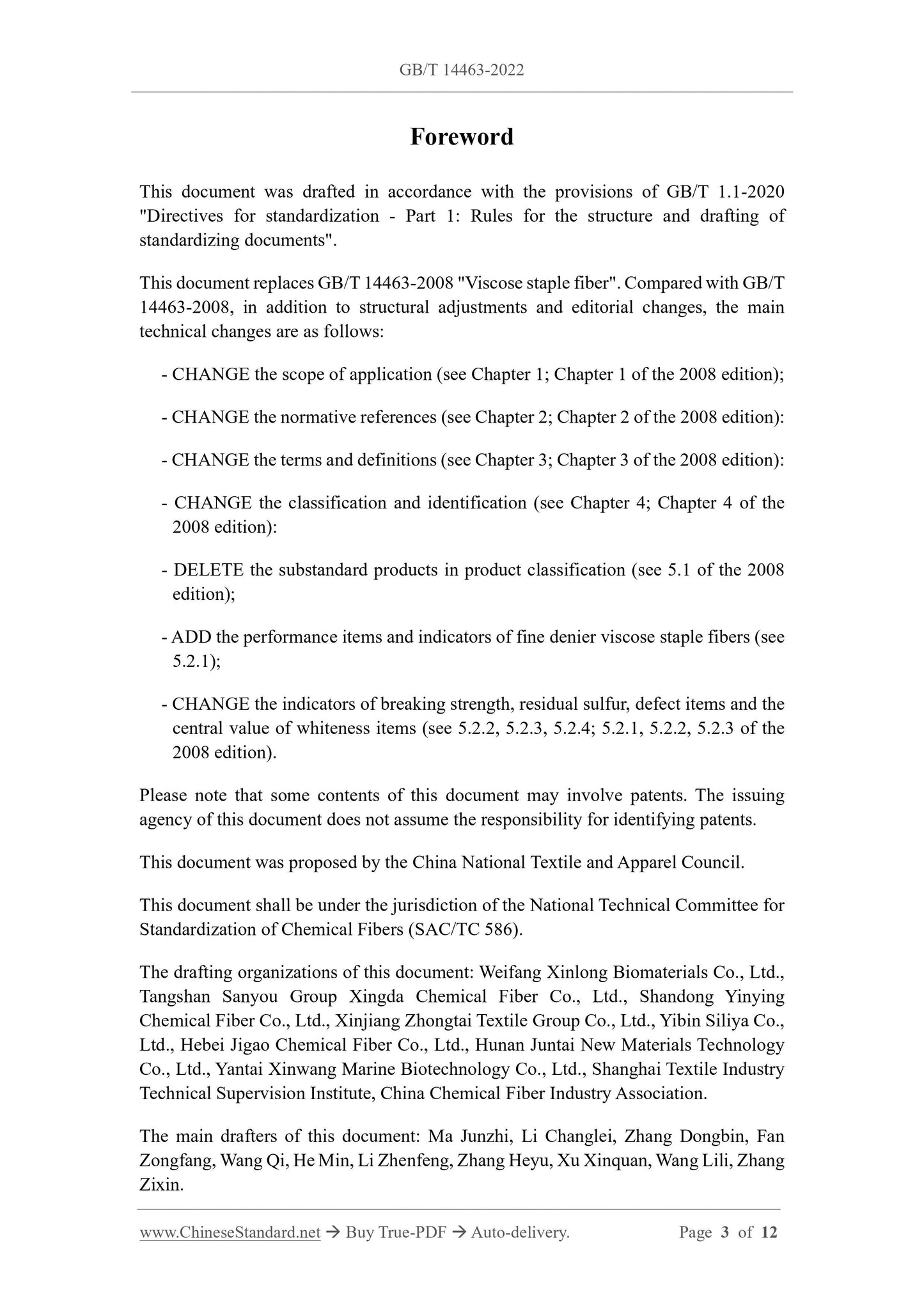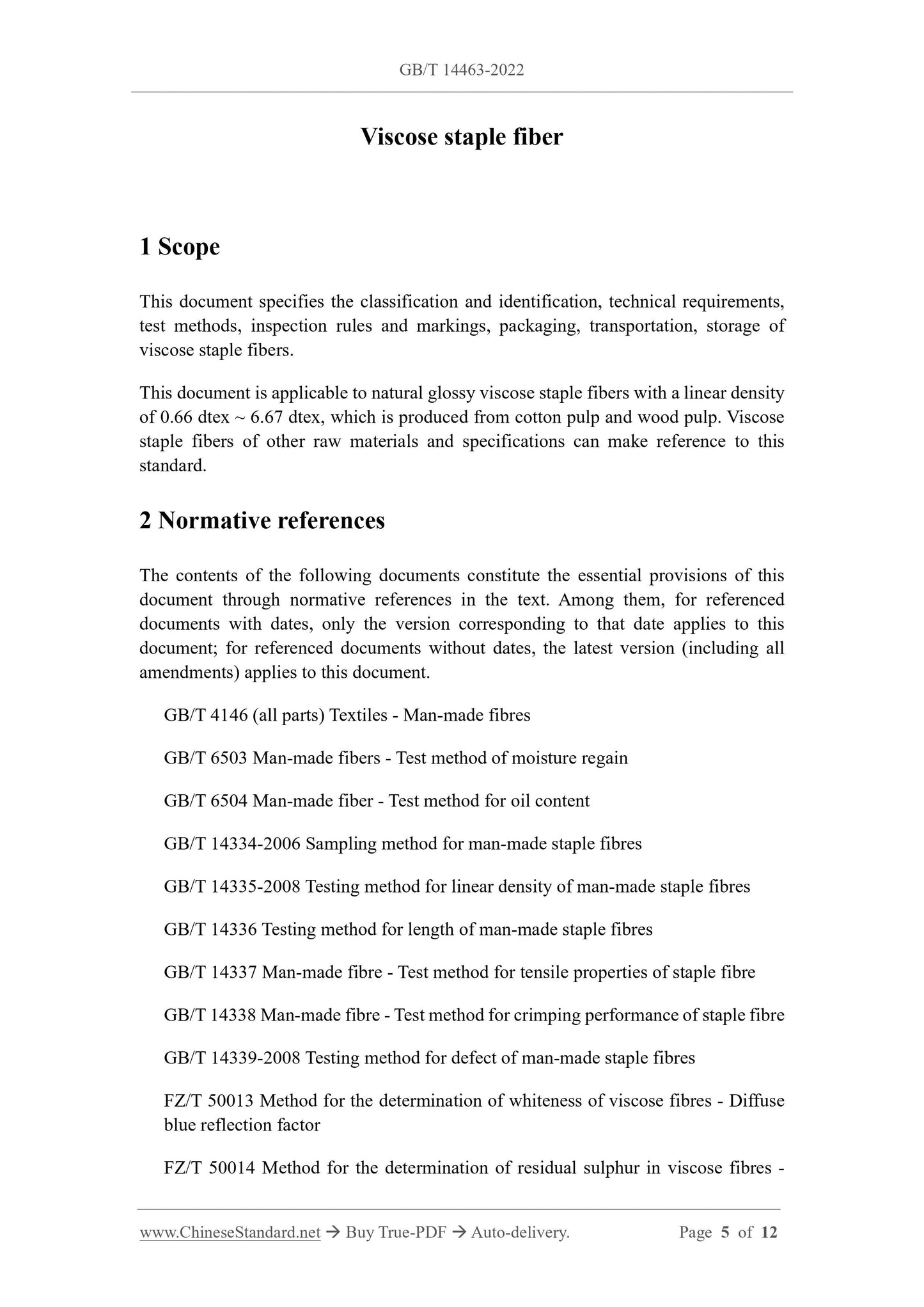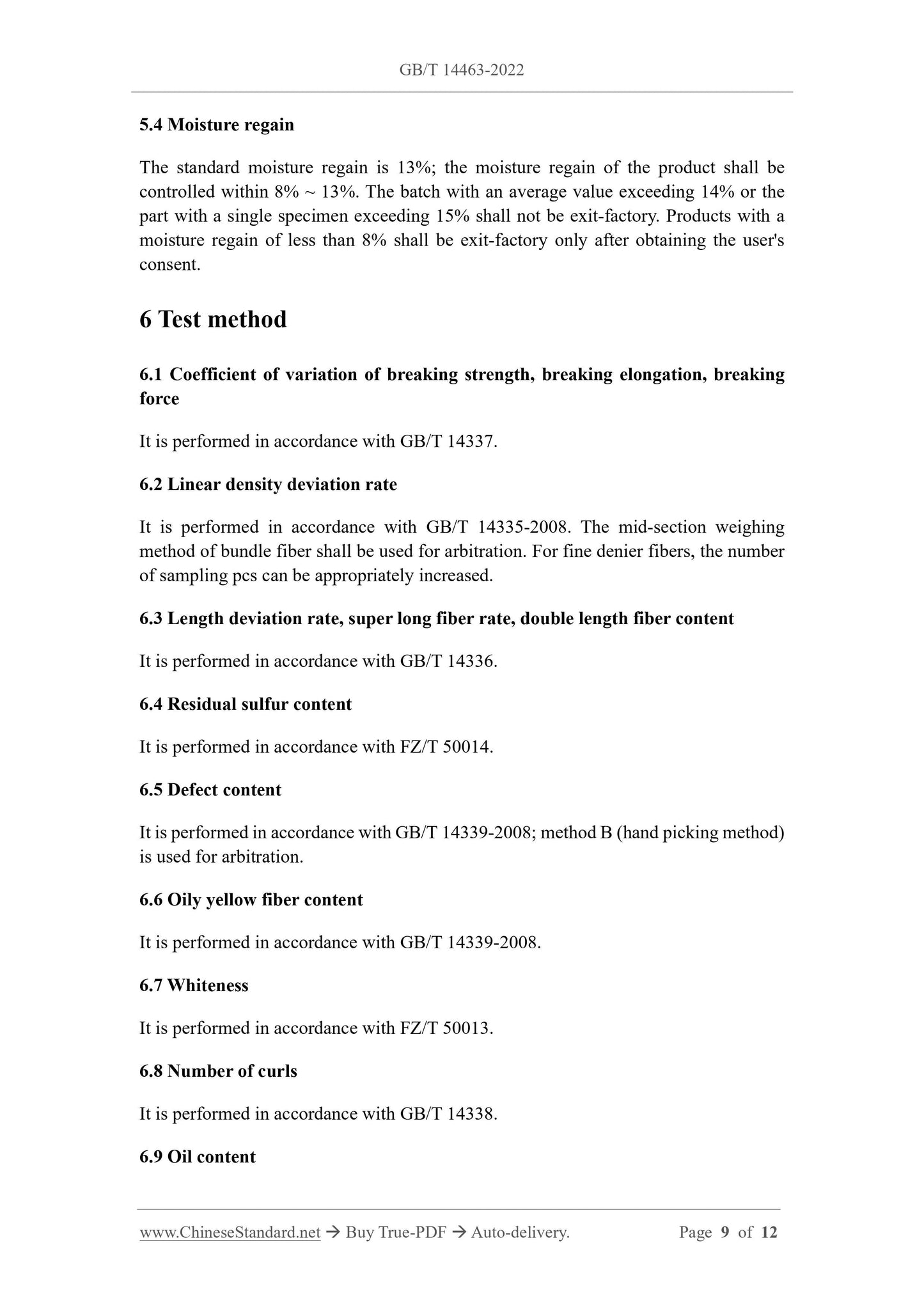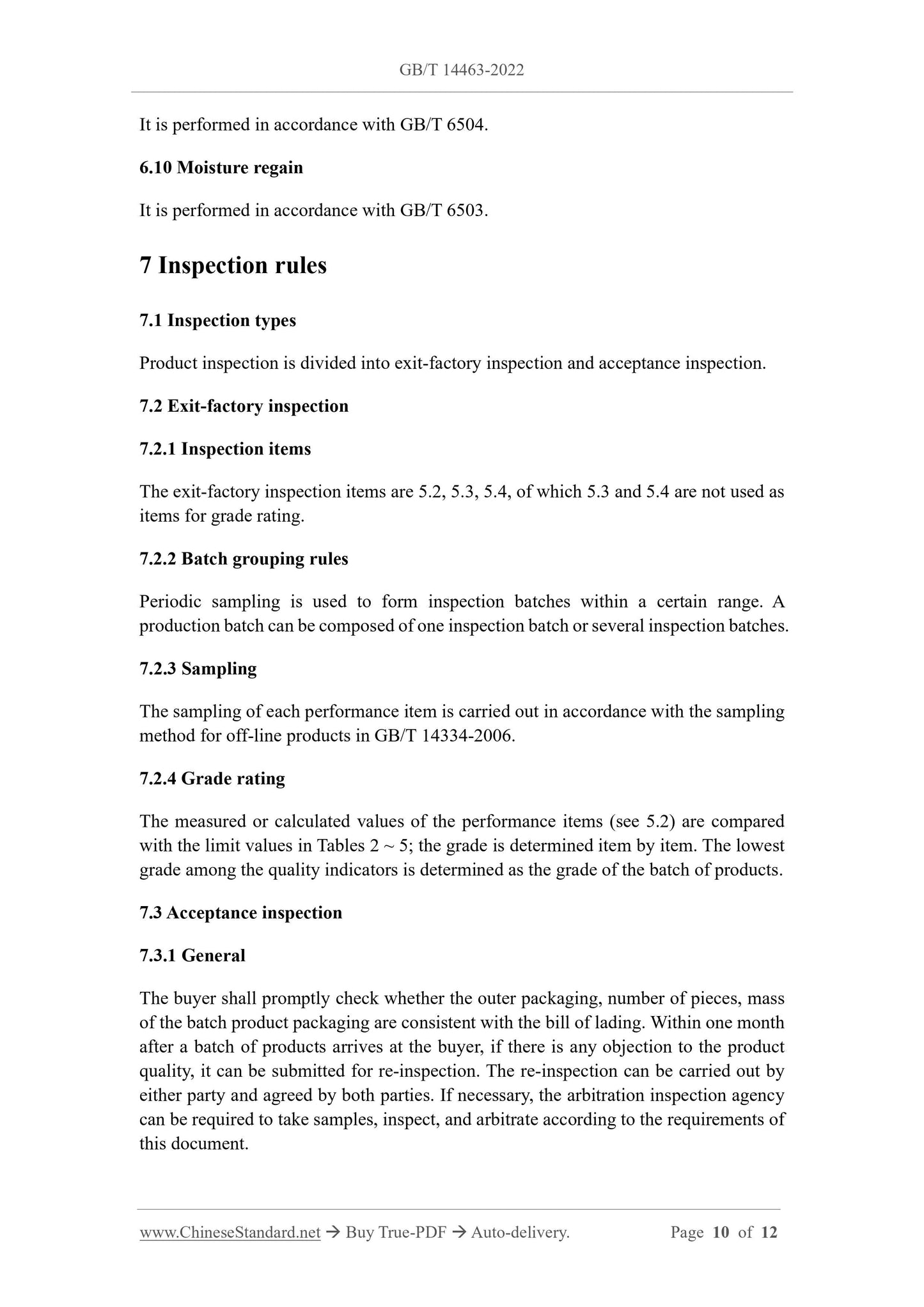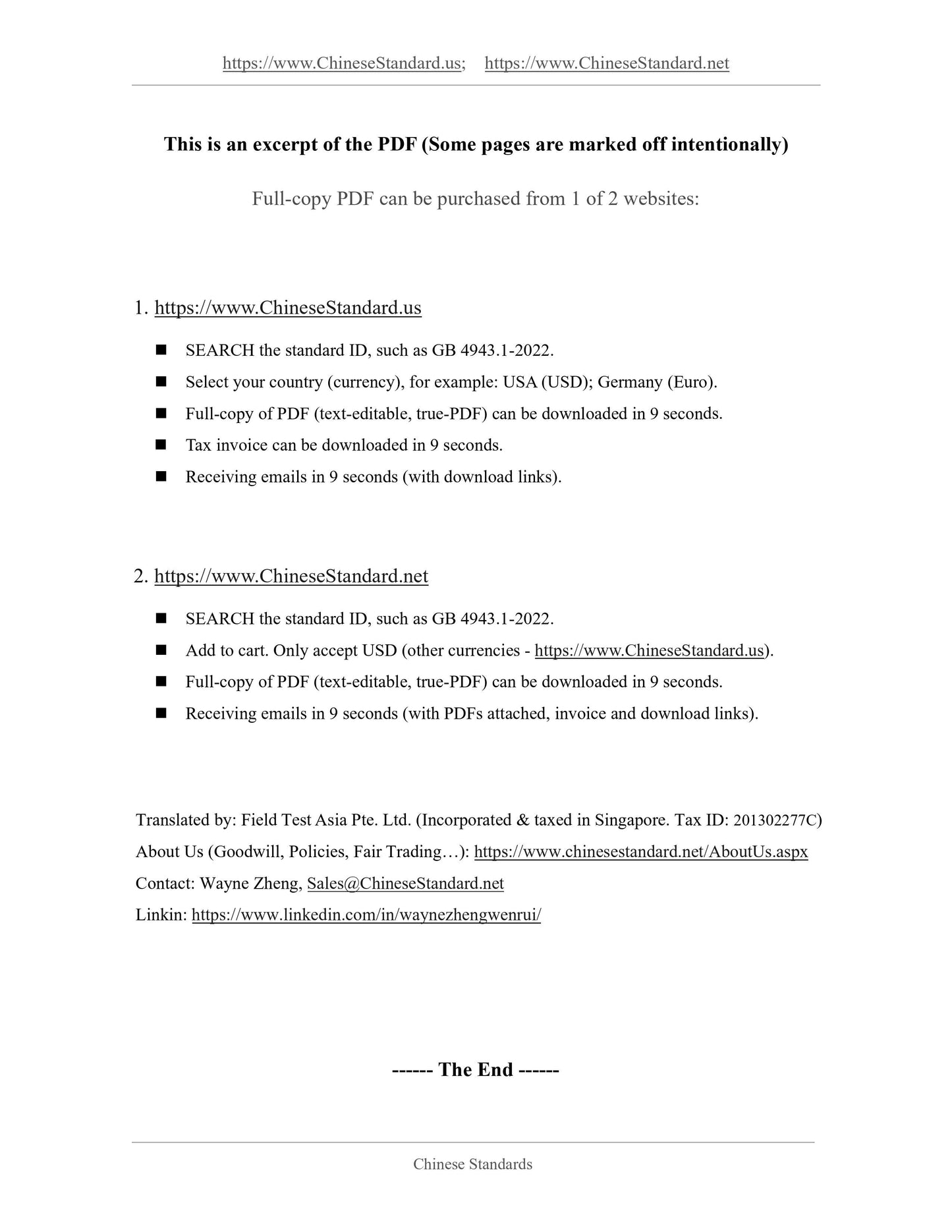1
/
of
7
www.ChineseStandard.us -- Field Test Asia Pte. Ltd.
GB/T 14463-2022 English PDF (GB/T14463-2022)
GB/T 14463-2022 English PDF (GB/T14463-2022)
Regular price
$170.00
Regular price
Sale price
$170.00
Unit price
/
per
Shipping calculated at checkout.
Couldn't load pickup availability
GB/T 14463-2022: Viscose staple fiber
Delivery: 9 seconds. Download (and Email) true-PDF + Invoice.Get Quotation: Click GB/T 14463-2022 (Self-service in 1-minute)
Newer / historical versions: GB/T 14463-2022
Preview True-PDF
Scope
This document specifies the classification and identification, technical requirements,test methods, inspection rules and markings, packaging, transportation, storage of
viscose staple fibers.
This document is applicable to natural glossy viscose staple fibers with a linear density
of 0.66 dtex ~ 6.67 dtex, which is produced from cotton pulp and wood pulp. Viscose
staple fibers of other raw materials and specifications can make reference to this
standard.
Basic Data
| Standard ID | GB/T 14463-2022 (GB/T14463-2022) |
| Description (Translated English) | Viscose staple fiber |
| Sector / Industry | National Standard (Recommended) |
| Classification of Chinese Standard | W52 |
| Word Count Estimation | 9,988 |
| Issuing agency(ies) | State Administration for Market Regulation, China National Standardization Administration |
Share
